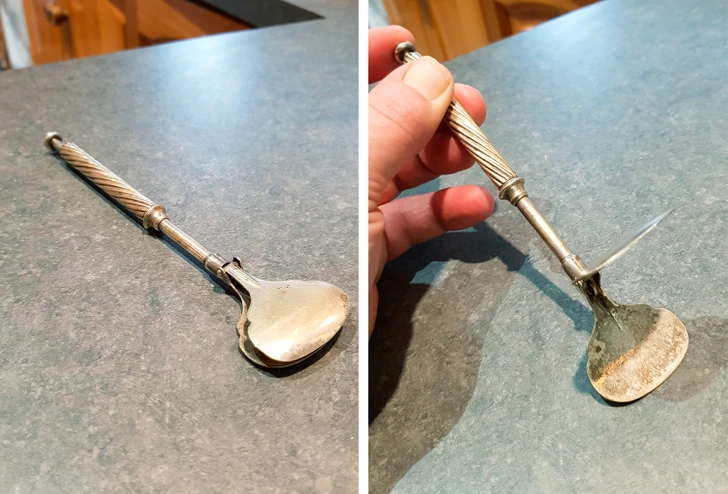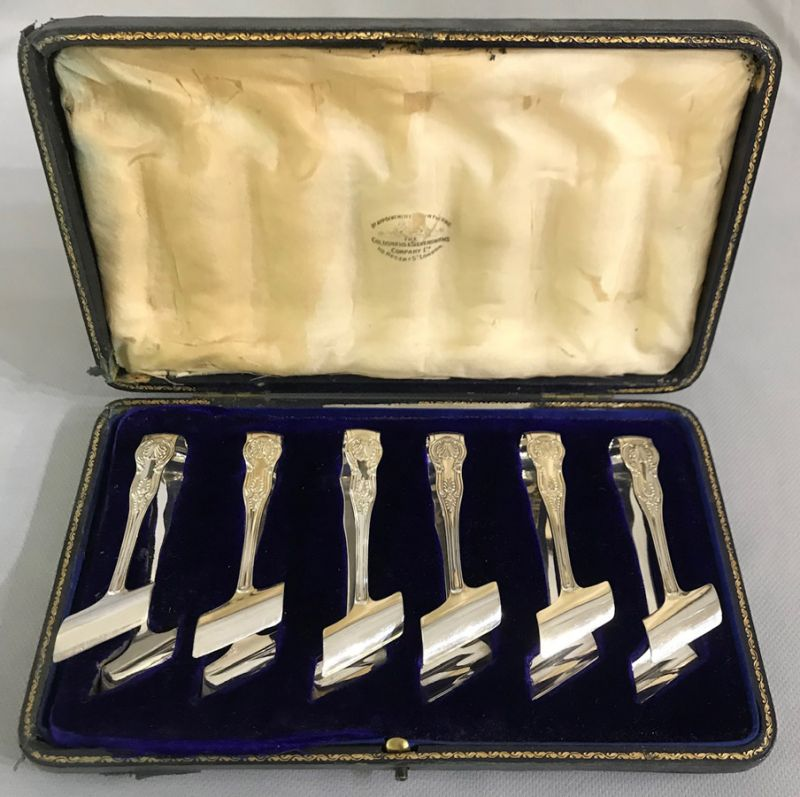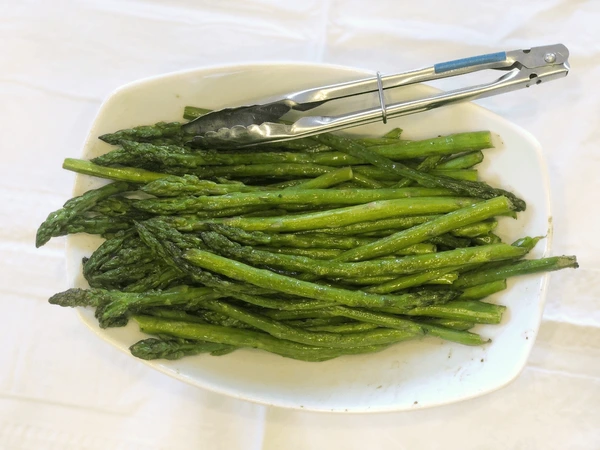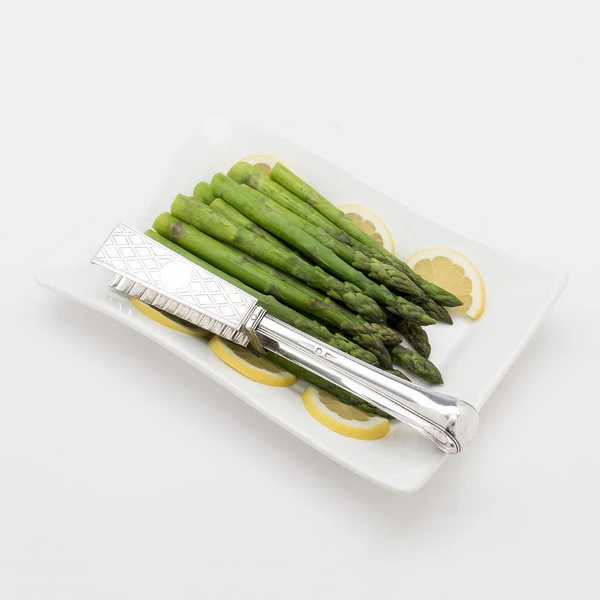Have you ever stumbled across a strange kitchen tool tucked away in your grandmother’s cabinet, leaving you to wonder what it could possibly be used for? You’re not alone. Many antique kitchen tools have left younger generations scratching their heads, wondering how such specific items were once part of everyday life. One such mystery object could be an asparagus server.
If you’ve found something with wide, flat prongs or tongs with a delicate grip, chances are you’ve unearthed an asparagus server, a tool with a rich history that dates back to the days of highly formal dining. But what exactly is an asparagus server, and why did it earn a special spot in kitchens of the past?

What Are Asparagus Servers?
Asparagus servers are specialty utensils used to serve asparagus spears without damaging their delicate structure. They come in two main styles: the tong-like version with serrated edges and a flat, broad version more like a spatula.
Asparagus tongs have a classic V-shaped design with subtly serrated ends, designed to gently grip the asparagus without crushing it. The tongs make it easy to grasp one or more spears at a time, lifting them from the plate or serving dish and transferring them cleanly to another.
Asparagus servers, on the other hand, are broader and flatter. These utensils are used to support several spears at once, making it easier to serve multiple pieces at the same time. They are perfect for more formal settings where asparagus is served as part of a multi-course meal.
In modern kitchens, these utensils may seem over-the-top, especially when compared to simple serving spoons or forks. However, asparagus servers were once a crucial part of dining etiquette, used to ensure that this delicate vegetable could be served without being mashed or damaged.
The History of Asparagus Servers and Tongs
Asparagus has been consumed for centuries, dating all the way back to Ancient Rome. The Romans were the first to cultivate this vegetable and recognized its culinary value. However, it wasn’t until the 16th century that asparagus made its way to England, becoming an exotic and prized dish among the aristocracy.
The 18th century marked the rise of asparagus’s popularity, particularly in France and England, where it became a fashionable accompaniment to other dishes. Its association with luxury dining led to the creation of specialized utensils to serve it properly.
By the Victorian era, asparagus was not just an exotic treat, but a staple in the homes of the wealthy. Victorians were known for their elaborate dining etiquette and rigid rules around proper meal service, so it’s no surprise that asparagus servers became de rigueur at the formal dinner table.
Asparagus servers were often included in larger flatware collections, especially those made from silver. They could feature ornate designs, such as engraved or pierced handles, and were a status symbol in high-society dining rooms.
Why Was Asparagus So Popular?
Asparagus gained popularity in Europe due to its delicate flavor and short growing season, making it a highly sought-after vegetable. It was known as a “luxury” vegetable, often referred to as the “food of kings,” and was frequently served during grand meals and banquets.

The complexity of cooking and serving asparagus added to its allure. It was typically boiled or steamed and served with butter or hollandaise sauce, making its presentation just as important as its taste. This led to the invention of specialized tools like asparagus servers, ensuring that the spears were handled with care and presented elegantly on the plate.
Antique Asparagus Servers as Collectibles
Today, asparagus servers are rare to find in most kitchens, but they’ve become a highly collectible item for antique enthusiasts and lovers of vintage kitchenware. Their unique designs and history make them valuable pieces for collectors.
Most antique asparagus servers were made from sterling silver or silver-plated metal and often featured intricate craftsmanship. These utensils might have been engraved with family crests, floral patterns, or intricate scrollwork. Some even feature pierced decoration on the terminals, allowing them to function as both tools and works of art.
Because of their high-quality materials and craftsmanship, many antique asparagus servers have stood the test of time. Their durability, paired with their historical significance, makes them a sought-after item for collectors looking to own a piece of culinary history.

How to Identify Antique Asparagus Servers
If you think you’ve found an asparagus server, there are a few ways to confirm its identity:
- Examine the Design: Asparagus servers are typically wide and flat or feature tong-like prongs. Look for a design that seems intended to grip or scoop delicate items.
- Check for Markings: Many antique servers were made from sterling silver or silver plate. Check for any hallmarks or maker’s marks that could indicate the server’s origin or authenticity.
- Feel the Weight: Antique servers are often heavier than modern utensils due to the materials used. If the tool feels substantial in your hand, it’s likely made from quality metal.
- Look for Ornate Detailing: Many asparagus servers from the 18th and 19th centuries feature intricate detailing such as engraved patterns, decorative handles, or pierced designs. These embellishments were common in utensils designed for formal dining settings.
Using and Caring for Antique Asparagus Servers
If you’re lucky enough to own an antique asparagus server, you might wonder whether it’s just a collectible or if you can actually use it. The good news is that many of these servers are still functional and can be used for their original purpose—serving asparagus at formal dinners or special occasions.

To keep your antique server in good condition, here are a few tips:
- Handle with Care: Asparagus servers, especially antique ones, can be delicate. Handle them carefully to avoid damaging any intricate designs.
- Clean Properly: Use a mild dish soap and warm water to clean the server after use. Avoid harsh chemicals that could damage the metal or any engravings.
- Polish Gently: If your asparagus server is made from silver, use a silver polish to keep it shining. Be gentle with any detailing or engravings to avoid wearing them down over time.
Conclusion: A Hidden Treasure in the Kitchen
Discovering an antique asparagus server in your grandma’s kitchen is like unearthing a hidden piece of culinary history. While they may seem like relics of a bygone era, these tools tell the story of how food was once a mark of sophistication and luxury. Whether you choose to use it at your next formal dinner or display it as a collectible, an asparagus server is more than just a kitchen tool—it’s a reminder of a time when every meal was an event to be celebrated with elegance and style.


